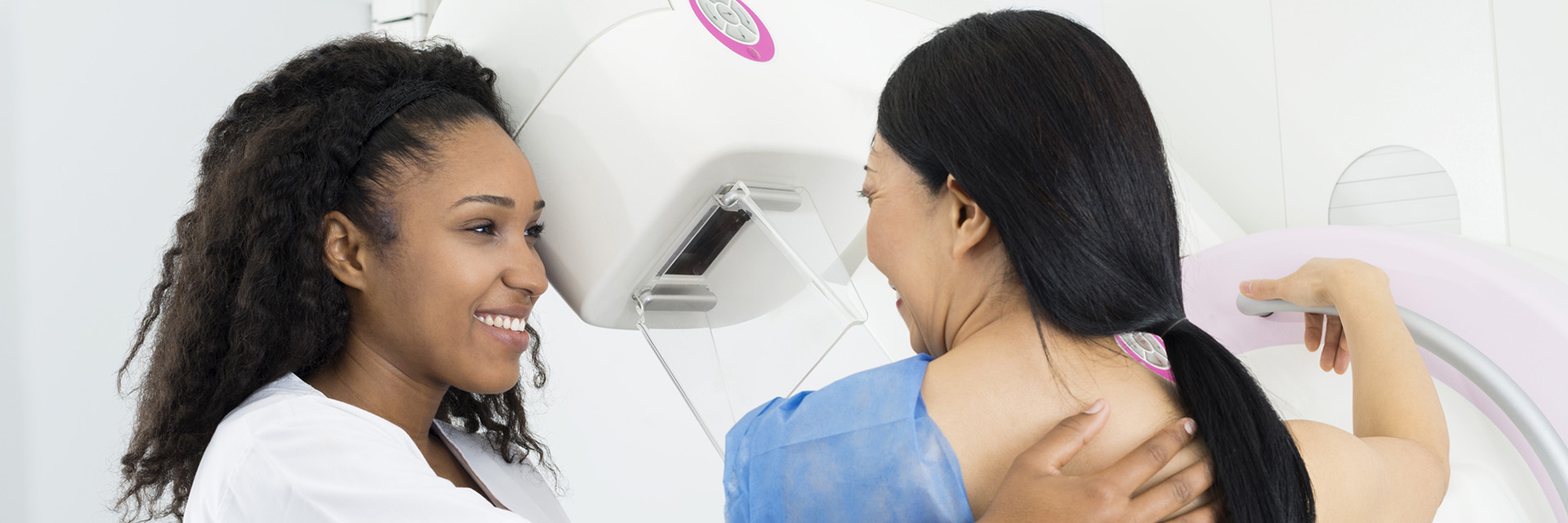Between carpool, last-minute science projects, that load of laundry that keeps piling up, or pulling the team together during the last leg of a big work project, as a woman, there can be plenty of times where you feel like nothing would get done if you weren’t there to take the lead. No matter how true that feeling may be, there is one thing that is certain: your breast health does start with you. Monthly breast self-exams (BSEs) can play a crucial role in detecting something unusual early, and with the American Cancer Society estimating that 276,480 American women will be diagnosed with breast cancer in 2020, early detection can be potentially lifesaving.
That’s why we spoke with Vanessa Pierce, a registered nurse and certified breast health nurse navigator on the nursing staff at The Virginia Clay Dorman Breast Care Center at Texas Health Southwest Fort Worth, to explain what a breast self-exam is, how often you should be performing one, and what to do if you feel something unusual.
The Importance of a Breast Self-Exam
While there are many diagnostic tests for breast health, the simplest exam is the one that is performed by you — a breast self-exam.
While a BSE may help you find a lump in-between your annual well-woman exam or mammogram, you shouldn’t go into the exam thinking the goal is find something; it’s more about understanding what your breasts feel and look like so that if something unusual does pop up, it’ll be easier for you to detect.
“If a woman examines her breasts every month, she becomes better acquainted with what her breast tissue feels like, so if she does happen to feel something abnormal from what she’s used to, it’s quicker for her to identify it and speak up,” Pierce explains.
For instance, Pierce explains that many women have dense breast tissue, therefore it may be harder for them to discern what’s normal breast tissue and what’s not, especially if they don’t perform a BSE regularly. That can lead to worrying about something that’s perfectly normal, or on the flip side, ignoring something that may be abnormal.
The self-breast exam is also very important since routine mammography in normal risk women does not usually start until age 40. Unfortunately, five percent of breast cancer cases occur in women under 40 years of age, according to a study by the Cleveland Clinic in 2019.
In addition to your annual check-ups and/or mammograms, think of the breast self-exam as another link in the chain of early detection.
How Often You Should Be Performing a BSE
Women should begin performing monthly BSEs in their teens and speak with their health care provider about any changes in shape, tissue or appearance.
The best time to perform a breast self-exam is 3 to 5 days after your period starts because your breasts will be less tender or lumpy around this time. If you do not have regular periods or are in menopause, perform your exam on the same day every month.
How to Perform a BSE
Step One — In the Shower
With the pads/flats of your 3 middle fingers, check the entire breast and armpit area pressing down with light, medium, and firm pressure. Check both breasts each month feeling for any lump, thickening, hardened knot, or any other breast changes.
Step Two — In Front of a Mirror
Visually inspect your breasts with your arms at your sides. Next, raise your arms high overhead. Look for any changes in the contour, any swelling, or dimpling of the skin, or changes in the nipples. Next, rest your palms on your hips and press firmly to flex your chest muscles. Left and right breasts will not exactly match—few women’s breasts do, so look for any dimpling, puckering, or changes, particularly on one side.
Step Three — Lying Down
When lying down, the breast tissue spreads out evenly along the chest wall. Place a pillow under your right shoulder and your right arm behind your head. Using your left hand, move the pads of your fingers around your right breast gently covering the entire breast area and armpit.
Use light, medium, and firm pressure. Squeeze the nipple; check for discharge and lumps. Repeat these steps for your left breast.
Don’t Be Afraid to Speak Up
No matter if you’re new to BSEs or perform one like clockwork every month, if you feel something that concerns you, never be afraid to speak up about it. Make an appointment with your primary care provider or OB/GYN and try not to think the worse before you see your provider. Many times, a lump is benign, but it’s important to get it checked out anyway.
“There is no concern too big or too small to discuss with your health care provider,” Pierce explains. “It is better to ask about something that turns out to be nothing than to dismiss a lump that may prove to be a breast cancer. Any matter of health that causes concern for a woman, no matter how seemingly insignificant it may be, is important to discuss with your health care provider.”
Pierce adds if you do bring up a concern and it gets dismissed by your health care provider and you are still concerned, keep advocating for yourself.
“The best advocate for your health is you. No one has more at stake than you do,” she says. “If something does not seem right keep pushing, keep asking questions until you are satisfied with your care.”
Over the course of a lifetime, one in eight women will be diagnosed with breast cancer. To learn more about your risk factors, or to find a health care provider, please visit TexasHealth.org/Breast-Care

